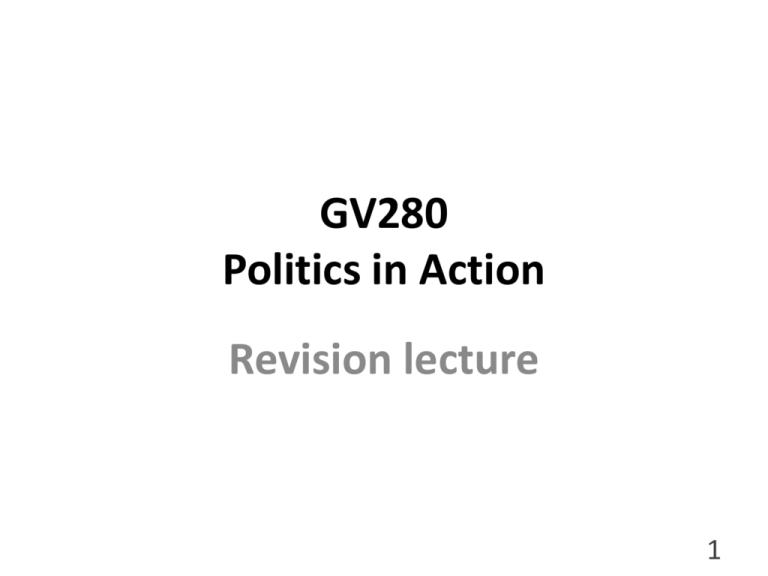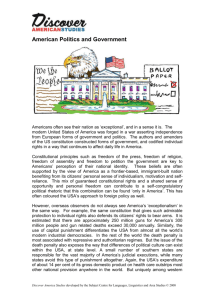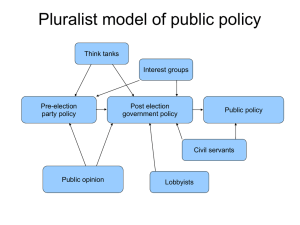GV280 Politics in Action
advertisement

GV280 Politics in Action Revision lecture 1 1. & 2. Definitions and models 2 Public policy – working definition The exercise of power by parties, individuals and groups, at the time when they are collectively in control of the state, over matters which are directly connected with the governing of the state. 3 Democratic model of public policy Party A policies ELECTION Party A Wins Party A policy = public policy Party B policies PARTY POLICY ELECTION PUBLIC POLICY 4 Pluralist model of public policy Think tanks Interest groups Pre-election party policy Post election government policy Public policy Civil servants Public opinion Lobbyists 5 POSSIBLE ACTORS IN THE POLICY PROCESS 1. The electorate 2. Politicians 3. Unelected officials 4. Elites 5. Interest groups 6. Big corporations 7. Think tanks 6 Pluralism & Rational choice • Pluralist model: multiple actors are involved in bargaining over and setting public policy • Rational choice model: actors seek to maximize the benefits they receive • Not mutually exclusive 7 3. Essence of decision 8 Explaining policy making In searching for an explanation, one typically puts himself in the place of the nation, or national government, confronting a problem of foreign affairs, and tries to figure out why he might have chosen the action in question. … [We assume] government behaviour can be most satisfactorily understood by analogy with the purposive acts of individuals. In many cases this is a fruitful assumption. Treating national governments as if they were centrally coordinated, purposive individuals provides a useful shorthand for understanding problems of policy. But this simplification – like all simplifications – obscures as well as reveals. In particular, it obscures the persistently neglected fact of bureaucracy: the ‘maker’ of government policy is not one calculating decisionmaker but is rather a conglomerate of large organizations and political actors. (Allison, p. 3) 9 Model 1: The Rational Actor • Possible rational explanations for Khrushchev’s actions • i. Bargaining chip in negotiations over US missiles • ii. Diversion/trap • iii. Defence of Cuba • iv. Cold War Politics • v. Missile power - a shortcut in the arms race 10 Model 2: Organizational Process A government consists of a conglomerate of semi-feudal, loosely allied organizations, each with a substantial life of its own. … Governments perceive problems through organizational sensors. Governments define alternatives and estimate consequences as their component organizations process information; governments act as these organizations enact routines. Governmental behaviour can therefore be understood … less as deliberate choices and more as outputs of large organizations functioning according to standard patterns of behaviour. (Allison, p. 67) 11 Model 3: Bureaucratic Politics 1.THE CUBAN PROBLEM 2. THE STRATEGIC PROBLEM 3. THE BERLIN PROBLEM 4. THE ECONOMIC PROBLEM 12 4. The players: politicians, civil servants and interest groups 13 Pluralist model of public policy Think tanks Interest groups Pre-election party policy Post election government policy Public policy Civil servants Public opinion Lobbyists 14 Pluralist model of public policy Interest groups Post election government policy Public policy Civil servants 15 16 Traditional model of executive power Prime minister (directs overall policy) Cabinet (directs individual departmental policy) Civil service (implements policy) 17 The Core Executive (Taken from Peter Dorey, Policy Making in Britain, Figure 3.1, p. 50) 18 Interest groups and policy networks Based on resource exchange Dependencies between actors Degree of dependence of each actor can vary with circumstances 19 Policy communities & issue networks D. Marsh and R A W Rhodes, ‘Policy networks in British politics’, in Marsh and Rhodes (eds), Policy Networks in British Government (Oxford: Clarendon Press, 1992 20 5. Policy and ideology 21 6. Policy and public opinion 22 Edmund Burke, Speech to the Electors of Bristol 3 November 1774 “Your representative owes you, not his industry only, but his judgement; and he betrays, instead of serving you, if he sacrifices it to your opinion.” 23 Thermostatic model of opinion-policy relationship IV: Government policy on issue X overlaid on public opinion at t1 1000 900 800 700 600 500 400 300 200 100 0 0 1 2 3 4 5 6 7 8 9 10 11 12 13 14 15 16 17 18 19 20 21 22 24 Thermostatic model of opinion-policy relationship V: Government policy on issue X overlaid on public opinion at t2 1000 900 800 700 600 500 400 300 200 100 0 0 1 2 3 4 5 6 7 8 9 10 11 12 13 14 15 16 17 18 19 20 21 22 25 Thermostatic model of opinion-policy relationship VI: Government policy on issue X overlaid on public opinion at t3 1000 900 800 700 600 500 400 300 200 100 0 0 1 2 3 4 5 6 7 8 9 10 11 12 13 14 15 16 17 18 19 20 21 22 26 Thermostatic model of opinion-policy relationship VII: Optimal government policy with normal distribution of public opinion 1000 900 800 700 600 500 400 300 200 100 0 0 1 2 3 4 5 6 7 8 9 10 11 12 13 14 15 16 17 18 19 20 21 22 27 Thermostatic model of opinion-policy relationship VIII: Government policy on issue X overlaid on public opinion at t4 1000 900 800 700 600 500 400 300 200 100 0 0 1 2 3 4 5 6 7 8 9 10 11 12 13 14 15 16 17 18 19 20 21 22 28 Thermostatic model of opinion-policy relationship IX: Government policy realigned to reflect new distribution of public opinion 1000 900 800 700 600 500 400 300 200 100 0 0 1 2 3 4 5 6 7 8 9 10 11 12 13 14 15 16 17 18 19 20 21 22 29 7. The media and the agenda 30 John Kingdon, Agendas, Alternatives and Public Policies PROBLEMS POLICIES POLITICS 31 Policy window Example: 1945 implementation of the Welfare State PROBLEM: the poverty of the 30s depression POLICY: Beveridge’s welfare state proposals POLITICS: Labour’s landslide victory in the 1945 general election 32 8. Policy and finance 33 Treasury objectives Provide funds for all government activities Limit expenditure to acceptable limits Maintain control over departmental budgets Input into departments’ policy decisions Keep expenditure within the bounds of the possible Avoid excessive taxation (but also maintain necessary levels of taxation) Maintain funding balance between departments 34 Departmental objectives Fulfil service commitments Achieve targets set by minister/cabinet/PM Show it is vigorously pursuing policies More spending = more effectiveness Maintain (or increase) funding levels as far as possible Compete with other departments 35 Common interests Maintain government’s reputation for competence Deliver effective services Maintain government’s reputation for financial responsibility Keep costs within reasonable bounds Keep taxes as low as possible 36 Causes of tension Departments believe Treasury sees everything in terms of money Treasury believes departments don’t understand financial constraints Departments believe other departments are over-funded Overspending and underspending 37 9. Policy and ethics 38 John Stuart Mill’s harm principle “The object of this essay is to assert one very simple principle, as entitled to govern absolutely the dealings of society with the individual in the way of compulsion and control. … The principle is, that the sole end for which mankind are warranted, individually or collectively, in interfering with the liberty of action of any of their number, is self-protection. That the only purpose for which power can be rightfully exercised over any member of a civilized community, against his will, is to prevent harm to others. His own good, either physical or moral, is not a sufficient warrant.” - J. S. Mill, On Liberty and Other Essays ed. John Gray (Oxford: OUP, 1991), pp. 13-14 39 40 10. The international dimension 41 11. Policy and party competition 42 Duverger’s law The simple-majority single-ballot system favours the two-party system Maurice Duverger, Political Parties (London: Methuen, 1954), p. 217 43 Left-right policy spectrum LEFT e.g. Redistribution State intervention RIGHT e.g. Private property rights Limited government 44 Normal distribution of public policy preferences LEFT RIGHT 45 Position of the median voter LEFT median voter RIGHT 46 Positions of main political parties (notional) Lab LibDem LEFT Con median voter RIGHT 47 Positions of main political parties (1980s) Lab LEFT LibDem Con median voter RIGHT 48 Positions of main political parties (1997-2000s) LibDem Lab LEFT median voter Con RIGHT 49 Positions of main political parties (now?) Lab LibDem Con LEFT median voter RIGHT 50 11. Inside the think tank 51 • Long history – Fabians blazed the trail • ‘Traditional’ vs ‘advocacy’ • Fill gap left by ideology … • … but were themselves influential in establishing ideologies • Helped Thatcherism to get established … • … and helped create New Labour • Evidence of direct impact on policy is thin … • … but they often set the tone for party policy … • … and ex-think tank personnel roam the corridors of power 52 12 Westminster and Whitehall: the legislature and the executive 53 • Executive – initiates legislation • Legislature – scrutinizes legislation (and the actions of ministers) – Legislative debate – Parliamentary questions – Select Committees • Civil service-ministerial relations: who is top? – Haldane report (1918) established relationship of interdependency and cooperation between civil servants and ministers – But this has eroded recently (more ideological/on message ministers, more special advisers) 54 13. Implementing public policy 55 The policy process (I) Agenda setting/ problem identification Policy formulation/ approval (e.g. legislation) Implementation 56 The policy process (II) Agenda setting/ problem identification Policy formulation/ approval (e.g. legislation) Implementation 57







